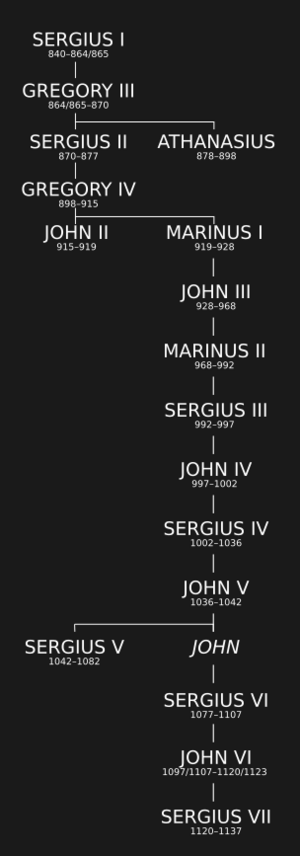Duke of Naples facts for kids
The dukes of Naples were important leaders in a city called Naples, located in Italy. They were like military governors or commanders. Naples was a special place because it was one of the few areas in Italy that still belonged to the Byzantine Empire. This was after a group called the Lombards had conquered much of Italy.
In 661, a Byzantine emperor named Constans II was very interested in what was happening in southern Italy. He decided to appoint a man from Naples named Basil as the first dux (doo-ks), which means "duke" or "leader." These dukes then ruled Naples for many centuries. Over time, they became more independent, and their power often passed down within families.
This continued until a new powerful group, the Normans, arrived. The Normans were very strong, and the dukes of Naples could not stop them. The last duke, Sergius VII, gave up his city to King Roger II of Sicily in 1137.
Contents
Dukes Appointed by the Byzantine Empire
These dukes were chosen by the Byzantine emperors. They were military leaders who helped govern Naples for the empire.
- c. 600 Gudeliscus, duke of Campania
- c. 603 Guduin, first duke of Naples
- c. 616 The city was taken by a rebel named John of Conza.
- c. 625–38 Anatolius
- 661–666 Basil
- 666–670 Theophylactus I
- 670–673 Cosmas
- 673–677 Andrew I
- 677–684 Caesarius I
- 684–687 Stephen I
- 687–696 Bonellus
- 696–706 Theodosius
- 706–711 Caesarius II
- 711–719 John I
- 719–729 Theodore I
- 729–739 George
- 739–755 Gregory I
- 755–766 Stephen II
- 767–794 Gregory II
- 794–801 Theophylactus II
- 801–c. 818 Anthimus
- c. 818–821 Theoctistus
- 821 Theodore II
- 821–832 Stephen III
- 832–834 Bonus
- 834 Leo
- 834–840 Andrew II
- 840 Contardus
Hereditary Dukes
These dukes were much more independent than the ones before them. They were not chosen by the emperor. Instead, they were descendants of Sergius I, who was chosen by the people of Naples.
Sergian Dynasty (Sergii)
This was a family line of dukes who ruled Naples for a long time.
- 840–864/865 Sergius I
- 864/865–870 Gregory III
- 870–877/878 Sergius II
- 877/878–898 Athanasius
- 898–c. 915 Gregory IV
- c. 915–919 John II
- 919–928 Marinus I
- 928–968/969 John III
- 968/969–992/997 Marinus II
- 992–997/999 Sergius III
- 997/999–1005 John IV
- 1005–1038 Sergius IV, he ruled with his son after 1033.
- 1027–1029 Naples was controlled by Pandulf IV of Capua.
- 1033–1050 John V, he ruled with his father before 1038 and with his son after.
- 1038–1076 Sergius V, he ruled with his father until 1050.
- 1077–1107 Sergius VI, he ruled with his son after 1090.
- 1090–1122 John VI, he ruled with his father until 1107.
- 1122–1137 Sergius VII
- 1137–1139 The position of duke was empty.
In 1139, Naples finally surrendered to the Normans. Soon after, the city chose a Norman ruler from the ruling Norman family.
House of Hauteville
This was the Norman family that took control of Naples.
- 1139–1144 Alfonso
- 1144–1154 William
In 1154, William became the King of Sicily. At this point, the line of independent dukes of Naples came to an end.


